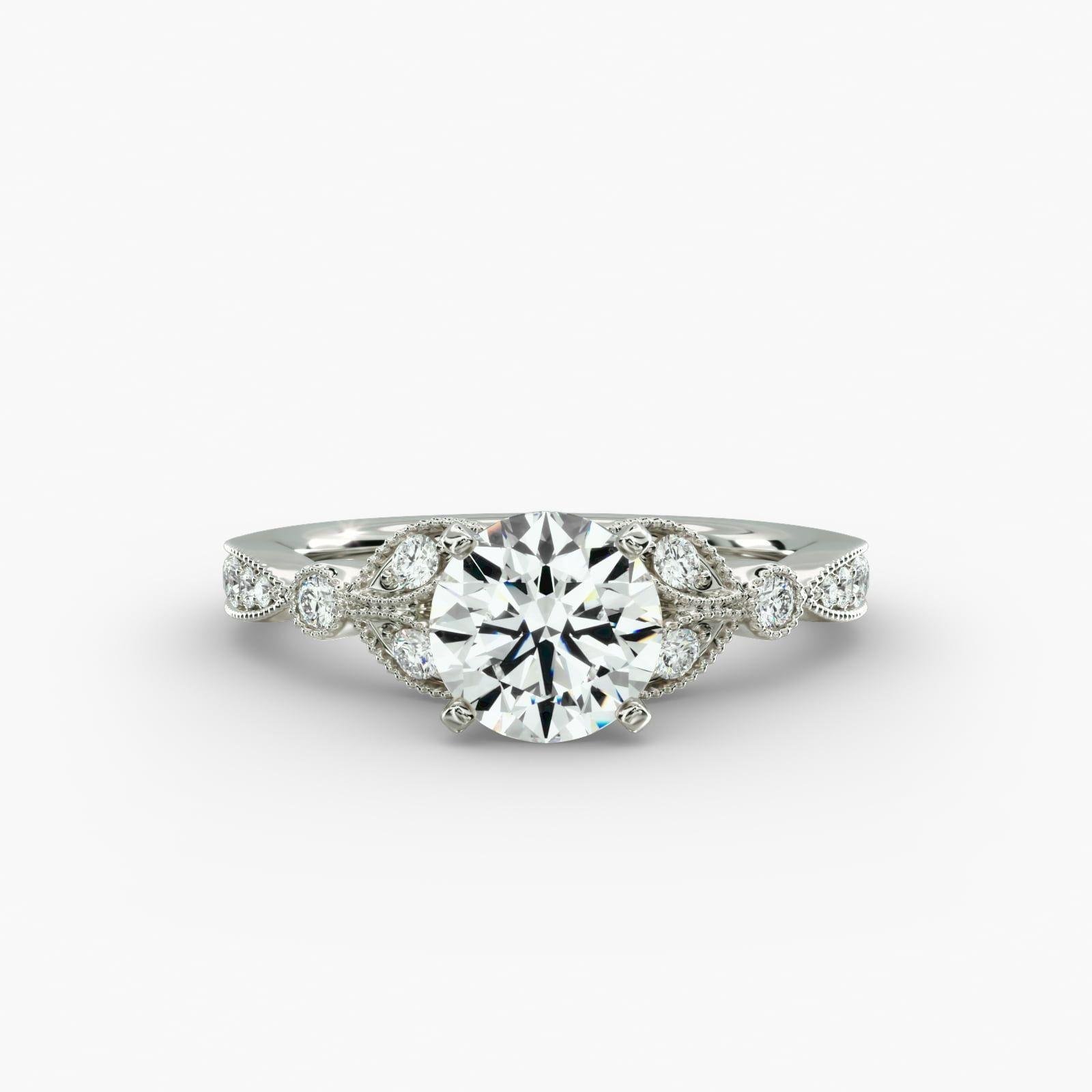Platinum vs White Gold: How to Choose
2 Minute Read
When shopping for fine white metal jewelry, you have two choices: platinum and white gold. The appearance of the two metals is essentially the same, but platinum is notably more expensive. You may be wondering if you should spend the additional money for platinum, or if gold is the way to go. Here is a comparison of the properties of both metals so you can make an informed decision.
This is Blue Nile's Petite Vintage Pavé Leaf Diamond Engagement Ring. The ring on the left is platinum while the one on the right is 18k white gold. Can you see a difference?
Why Is Platinum More Expensive Than White Gold?
Both platinum and white gold are excellent jewelry metals. The difference in value mostly comes down to rarity, with platinum being about thirty times rarer than gold.
What Are the Differences in the Properties of Platinum and White Gold?
While platinum and white gold look the same, there are some differences in their physical properties.
- Potential Allergic Reaction: The platinum sold by Blue Nile is 95% pure and is hypoallergenic. Gold, when pure, also won't cause any skin irritation. However, if you purchase an item made from a lower purity of gold such as 14k which is 58.3% pure, the other metals in the alloy can trigger a response in people with especially sensitive skin.
- Durability: Platinum is a very strong metal that is resistant to damage and will securely hold any gemstones for a very long time. However, it is not as flexible as gold. As a result, gold jewelry can have far more intricate designs than platinum. If you are looking for a dainty piece with fine details, you are going to see a lot of gold options. However, if you are looking for an item that is less ornate but very sturdy, platinum may be the way to go. Something else to consider is that platinum gets harder the more it is manipulated.
- Weight: You will notice that platinum jewelry is slightly heavier than similar white gold pieces. For small items like wedding bands, the difference is minimal. However, when presented with both options, some people may have a preference one way or the other.
- Maintenance: Over time, you will notice that your platinum jewelry, particularly rings, ages differently than similar white gold items. Platinum will keep its bright white appearance without developing any tarnishes or dullness. It is also more resistant to scratching than gold. However, polishing and manipulating platinum jewelry is difficult and requires special tools. Frequent polishing will wear away quite a bit of metal, and the ring will become harder to polish with each treatment. Alternatively, white gold is much easier to work with but is often plated with a thin layer of rhodium that increases the whiteness and shine of the metal. This finish can rub off over time, resulting in minor discoloration and a reduction of shine. Fortunately, polishing and reapplying the rhodium to white gold is relatively straightforward and affordable.
Emily Frontiere
Emily Frontiere is a GIA Graduate Gemologist. She is particularly experienced working with estate/antique jewelry.
Related Articles
Buying Guide: Engagement Rings under $1,000
Trendiest White Gold Jewelry of 2025
History of Signet Rings
What Is the Best Diamond Color for a 2 Carat Diamond?
Latest Articles
800 Years of Mogok: A Celebration in Tenuous Times
What is the Average Gemstone Faceting Yield?
Pyroxmangite Value, Price, and Jewelry Information
How to Identify Emerald Simulants and Synthetics
Never Stop Learning
When you join the IGS community, you get trusted diamond & gemstone information when you need it.
Get Gemology Insights
Get started with the International Gem Society’s free guide to gemstone identification. Join our weekly newsletter & get a free copy of the Gem ID Checklist!
